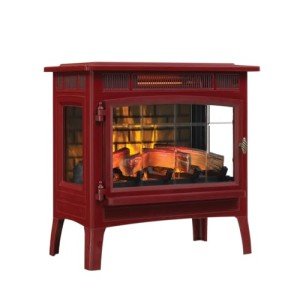What Is Freestanding Stoves For Sale? History Of Freestanding Stoves For Sale
Freestanding Stoves for Sale: The Ultimate Guide
Freestanding stoves, also called standalone stoves, are a progressively popular choice for house owners seeking to boost the heating efficiency and visual appeal of their home. They can be found in a myriad of styles, sizes, and fuel options, providing versatility to fulfill the varied requirements of customers. This post checks out different elements of freestanding stoves, including their benefits, types, and features, together with a guide to purchasing the right stove.
What is a Freestanding Stove?
A freestanding range is a heating home appliance that is not developed into a wall or cabinetry. Rather, www.fireplacesandstove.com stands separately in a room and can be put in various places, making it a versatile heating service. These stoves can utilize different fuels, such as wood, gas, or pellets, and are designed to offer heat while improving the ambiance of a space.
Advantages of Freestanding Stoves
Freestanding stoves are preferred for numerous reasons:
- Heating Efficiency: Freestanding stoves can produce considerable heat output while being fuel-efficient.
- Visual Appeal: With numerous styles varying from traditional to contemporary, they can be a focal point in any room.
- Setup Flexibility: They can be put in varied areas, permitting for simple integration into existing home layouts.
- Cost-Effective: Many freestanding stoves are less costly to set up compared to integrated systems.
- Heat Distribution: They can efficiently distribute heat through the convection procedure, heating up the surrounding area.
Kinds Of Freestanding Stoves
Freestanding stoves come in numerous types based upon their fuel source, including:
Type
Description
Wood Stoves
Usage traditional wood logs for fuel, using a rustic appeal and a distinct atmosphere.
Gas Stoves
Operate utilizing gas or lp, offering practical and manageable heating.
Pellet Stoves
Make use of compressed wood pellets as fuel, known for their efficiency and eco-friendliness.
Electric Stoves
Usage electrical energy as a power source, available in different styles, frequently including modern designs.
Key Features to Consider
When shopping for a freestanding range, a number of features must be taken into consideration:
- Heat Output (BTUs): Consider the size of the area you wish to heat and pick a stove with an appropriate BTU score.
- Size and Design: Ensure the stove fits the space and matches the space's decor.
- Fuel Type: Decide on the most practical and economical fuel type for your home.
- Efficiency Ratings: Look for the range's efficiency ratings (like EPA certification for wood stoves) to ensure you're making an environment-friendly choice.
- Safety Features: Consider designs with security features such as car shut-off, heat resistant glass, or low-clearance options.
Acquiring a Freestanding Stove
When thinking about purchasing a freestanding range, it is important to assess several crucial aspects to ensure you invest sensibly:
1. Budget plan
Setting a clear budget is essential when buying a freestanding range. Rates can differ extensively based upon the type, brand name, and features:
- Basic Models: ₤ 800 – ₤ 1,500
- Mid-Range Models: ₤ 1,500 – ₤ 3,000
- High-End Models: ₤ 3,000 – ₤ 6,000+
2. Research Study Brands and Models
Extensive research can assist you reveal numerous options in the market. Some notable brands in the freestanding range industry consist of:
- Jøtul
- Quadrafire
- Regency
- Lopi
- Harman
3. Consult Reviews
Read client reviews and professional ratings online to get insights into the performance and reliability of different models.
4. Local Regulations
Inspect local structure codes and regulations concerning range setup, particularly for wood and gas stoves, to make sure compliance.
5. Setup
Think about professional installation, especially for gas or wood designs, as they often need unique ventilation or flue systems.
FAQs About Freestanding Stoves
1. Are freestanding stoves safe to use?
Yes, when effectively set up and kept, freestanding stoves are safe. Nevertheless, it's important to follow the manufacturer's standards and regional codes.
2. How do I maintain my freestanding stove?
Routine maintenance consists of cleaning up the flue or chimney, examining for blockages, and making sure all parts are functioning correctly. Annual inspections by a licensed technician are advised.
3. Can I utilize a freestanding stove as a primary heating source?
Yes, numerous homeowners use freestanding stoves as primary heating sources, specifically in areas where traditional heating might be limited.
4. Are freestanding stoves energy-efficient?
Lots of more recent designs are developed for high efficiency, providing better heat retention and lower emissions compared to older designs.
5. What is the typical life expectancy of a freestanding stove?
With proper maintenance, the typical life expectancy of a high-quality freestanding stove can be around 15 to 20 years.
Freestanding stoves are a practical and elegant alternative for heating homes. By comprehending the different types, advantages, and features offered, property owners can make educated choices that suit their preferences and heating needs. Whether selecting a wood, gas, pellet, or electric range, buying a quality design will provide warmth, ambiance, and complete satisfaction for many years to come.
